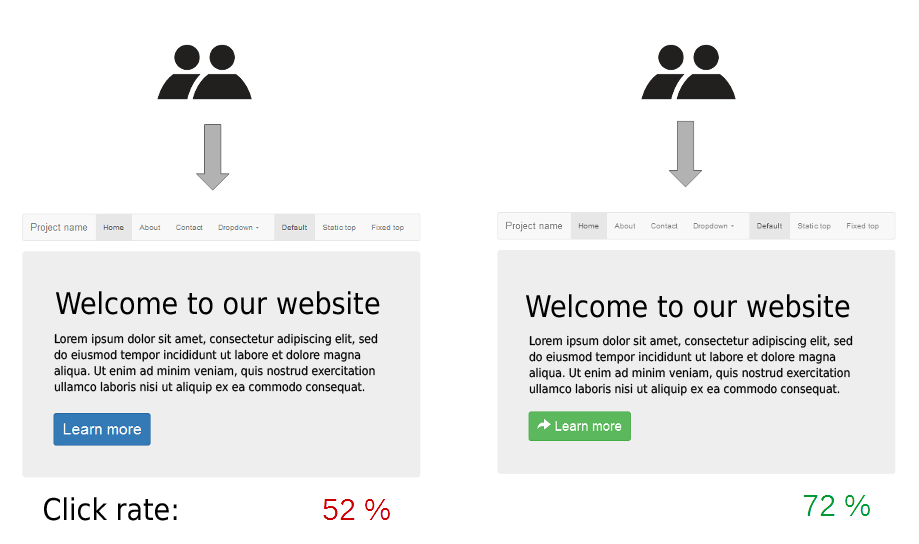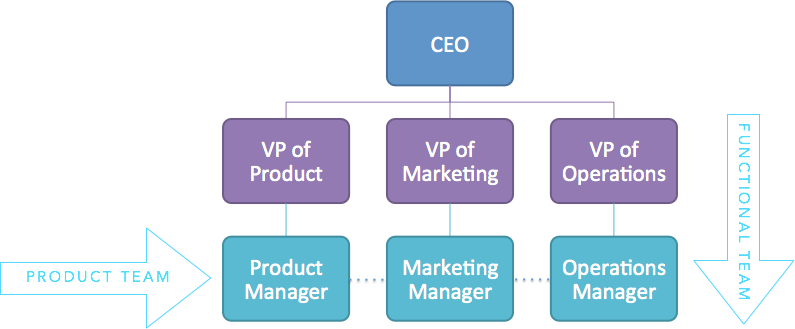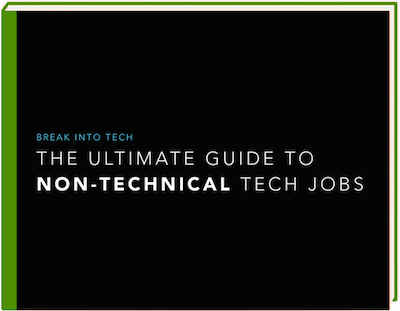
9 Tech Keywords that Should Be on Your Resume was originally published on Break Into Tech.
Introducing Your Tech Glossary
If you’re looking to land a tech job for the first time, you may be concerned that your resume doesn’t read as “techie” enough. After all, it’s tough to compete with industry insiders who speak – and write – the lingo.
Luckily, there are several common buzzwords across the tech industry that can both make you look like an insider and are universal enough that you’ve probably already had experience with them; you just don’t know it yet!
So without further adieu, here are nine resume keywords that can take your tech resume to the next level, starting right now:
A/B Test

Not that ab testing… 🙂
Have you ever had a hunch about a new way of doing things?
For instance, maybe you were working at a clothing store and thought:
“If we group apparel by color, I bet it will be more eye-catching and lead to more sales.”
And so you actually tried an experiment where you put out a table of color-matched items right next to a traditional one and measured which grouping sold better.
If so, guess what? You already have experience with the most important technique in the entire tech industry: A/B testing.
Whether it’s Google showing different versions of its homepage to different users to find out which gets the most clicks or Uber offering different pricing to different customers to find the sweet spot, testing one hypothesis (A) against the existing version (B) is the fastest way to learn what works.
So if you’ve already employed this methodology, be sure to take credit for it with a bullet like this:
“A/B tested retail merchandising tactics leading to a 27% increase in sales week-over-week.”
CRM

The #1 CRM system: Salesforce
Does your organization track its customers using any kind of software?
If so, chances are that you already have experience with one of the most common tools in the tech world: CRM (Customer Relationship Management) software.
These are the platforms (typically sold by Salesforce, SAP, Oracle, and Microsoft) that sales, marketing, and customer service teams use to identify prospective customers, target them with deals and offers, and serve them well once they’re onboard.
Which means that, having experience with them, can give you a big leg up for roles on these teams.
So if you’ve got experience using these tools (even if sold by a different vendor), be sure to showcase it with a resume bullet like this:
“Managed CRM for manufacturing clients, identifying 10 existing customers who were ripe to grow, leading to $57K in incremental revenue.”
CTR

Two keywords for the price of one: A/B testing CTR!
Have you ever measured the performance of anything online?
For instance, maybe you sent out an employee newsletter through Mailchimp and noticed that your newest version got more clicks than your last one? Or perhaps you put up a Facebook ad for your nonprofit that generated a lot more interest than anyone expected?
If so, you’re likely experienced with one of the most common measures of success in the tech world: CTR (Click-Through Rate).
This is a simple calculation that can apply to just about any digital experience:
The Number of People Who Clicked on the Experience (Ad/Email/Webpage)
—————————————————————————————————–
The Number of People Who Saw the Experience
While CTR isn’t the most important number in the long-run, since tech firms want to generate long-lasting engagement and revenue (not just clicks), it’s a great short-term proxy for whether users are interested in something.
And so if you’ve got that experience, be sure to flaunt it, as in this example bullet:
“Increased the CTR on our internal employee emails from 5% to 10% within just six weeks.”
GTM

GTM planning is just like this – minus all the rocket fuel, of course…
Can you think of a time when you helped launch a new product or service?
If so, you’ve been responsible for what the tech world likes to call GTM – i.e., Go-to-Market.
This phrase encapsulates all the planning and processes that go into a big launch. Everything from a high-level sales and marketing strategy all the way down to having PR response plans ready for potential crises and customer service teams trained up to handle client questions.
So no matter which piece of that overall launch effort you’ve been responsible for in the past, be sure to list it on your resume like this:
“Led GTM for new confectionery product, coordinating manufacturing and distribution, leading to sales of $2.3M in the first quarter of availability.”
MVP

The MVP way to build a car
Did you ever throw three touchdowns in the Super… just kidding. This isn’t that kind of MVP.
Instead, it stands for Minimum Viable Product – an approach to new product development that’s been all the rage in the tech world since Eric Ries published The Lean Startup back in 2011.
The idea of an MVP is that, too often, tech companies spend years building a complex, fancy product, only to discover that no one wants it. So to prevent this huge amount of waste, product managers and engineers are encouraged to build only the smallest, most basic version of a new idea before bringing it to customers. That way, they can gather feedback and measure demand before they invest years and millions of dollars in improving the concept.
And so, if you’ve ever built a prototype to show customers or asked for feedback from clients before something was fully polished, you’ve also designed an MVP.
Here’s an example bullet:
“Designed MVP for new lawn mower concept, gathering feedback from 27 customers; much of which went into the final, award-winning design.”
OKRs

An example OKR for a new transportation company
OK, here’s an easy one: Have you ever set a clear goal for yourself?
As low a bar as that seems, it’s a huge part of how tech companies operate today. Specifically, thousands of firms from tech giants to tiny startups have embraced a planning framework called Objectives and Key Results (OKRs).
Originally used by Intel, then later popularized at Google, this approach requires all employees to have a clear set of goals and target outcomes every quarter. For example:
Objective: Make Google the top search engine in America
Key Result: Google Search’s US market share should be #1 according to Comscore by March 31
So if you’ve ever applied this same, measurable approach to evaluating your own performance, feel free to share with a bullet like this:
“Brought on 27 new clients, outperforming OKRs by 56%.”
SQL

A new baby was born in the US! Here’s how you’d say that in SQL.
Are you an Excel pro? Does the idea of running a VLOOKUP get you pumped up?
If so, chances are you have what it takes to be great at one of the most universal tools of the tech trade: SQL (Structured Query Language).
While SQL (often pronounced “see-quil”) is a programming language, don’t let that be a turn off. It’s not only the absolute easiest one to master (compared to say Java or C++), it’s the most useful language for every tech worker to know, even if you’re not a coder. That’s because it’s the way that you get information out of pretty much every database you’ll encounter in the tech world.
For instance, if you worked at Pinterest and wanted to find out what the most pinned item in the world was, you could do that with a couple of lines of code. Or if you worked at Twitter and wanted to figure out who had the most followers, 3 minutes worth of SQL would get you the answer. And make you look pretty badass in the process!
So even if you’ve never used SQL before, check out Codeacademy’s free course. Chances are, if you’re already good at Excel, you’ll pick it up in a couple of hours.
Which will will let you apply it in your own job and write a resume bullet like this:
“Used SQL to query the inventory database, helping to predict which items were in danger of being out of stock before the big holiday sales season.”
UX

UX is the whole pie – not just how something looks, but how it works and how it feels!
Have you ever spent hours making sure that your customers have a great experience online?
For instance, maybe you’ve slaved over your organization’s website, making sure it represents the high quality services your team offers? Or perhaps you’ve reinvented your company emails to make sure they’re easy to digest?
If so, you’ve been focused on something that every tech company is fanatical about: UX (User Experience).
That’s because, in 2019, it’s no longer enough just to have a cool product or service. You now need to make it simple and engaging enough for customers to actually want to use it.
And that’s where UX design comes in – from understanding how customers think through 1:1 interviews to testing new website or app designs to measuring how quickly and easily users navigate those digital experiences and make a purchase.
So even if you’re not a designer by trade, you can definitely take credit for your UX-oriented approach via bullets like this one:
“Renovated plumbing website with an eye to world-class UX, generating 10% more lead forms by removing friction from the submission process.”
X-functional

Matrixed tech teams require x-functional collaboration
Let’s close up with one keyword that every future techie should have on their resume: X-functional.
Because as funky as it looks, this keyword (short for cross-functional) speaks to the highly matrixed nature of tech firms. In other words, most tech teams don’t work in functional silos – e.g., marketers sit with the marketing department, engineers sit with the engineering department. Instead, they typically come together on product teams (e.g., Gmail, Alexa) that require staffers from different backgrounds to collaborate.
For example, if Google wants to roll out a new feature in Gmail, they need a product manager to conceive of it based on insights they get from a UX researcher. And then, a designer has to lay it out, an engineer has to build it out, and a marketer has to get the word out. All in careful coordination with each other!
So assuming you’ve had to work in similar setups at some point in your career, you might as well take credit for it with a bullet like this:
“Led x-functional collaboration between HR and legal teams to establish the company’s first internship program, bringing in 39 future stars for the organization.”
The A-B-Cs of T-E-C-H
If you’re looking to break into tech, it can be easy to look at a resume bullet like this and throw up your hands in frustration:
“Oversaw x-functional project with UX and sales teams to A/B test new CRM platform; our MVP drove historic CTRs, crushing quarterly OKRs.”
But once you understand that this alphabet soup is really just common sense masquerading as top-secret insider lingo, you’ll also understand that you absolutely have what it takes to succeed in tech.
After all, you’ve already walked the talk – now you just need to talk it!
Get a pro resume review.
Get my complete tech job search course + a resume review to 10X your chances!
Explore tech careers.
Learn about 12 tech jobs that don’t require any coding.





